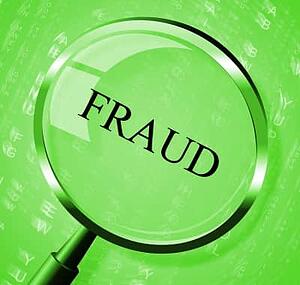How to Prevent Retirement Plan Fraud
 The Internal Revenue Service (IRS) recently released the results of their Fraud Project, which was completed by the Employee Plans Compliance Unit (EPCU). Their project was based on Form 5500’s that were filed and had indicated an actual Fraud Loss. Based on their reviews, the IRS determined two of the main contributing factors to fraud were weak internal controls and risky investments.
The Internal Revenue Service (IRS) recently released the results of their Fraud Project, which was completed by the Employee Plans Compliance Unit (EPCU). Their project was based on Form 5500’s that were filed and had indicated an actual Fraud Loss. Based on their reviews, the IRS determined two of the main contributing factors to fraud were weak internal controls and risky investments.
As a plan sponsor, it is a best practice to strengthen your controls surrounding plan operations to limit the potential risk of fraud. Similar to a company, plan’s should have strong internal controls to minimize the risk of fraud. Here are some best practices that the IRS noted in their project results.
Best Practices for Retirement Plan Internal Controls
- Have an outside party verify the accuracy of the plan’s books and records.
- Trace deposits and payments to original documents.
- For deposits in a 401k plan, verify the employee deferrals to the Form W-3 filed on an annual basis.
- For distributions paid from the plan, verify that all distributions went to former employees, retirees or beneficiaries of those individuals.
- Verify that the fidelity bond is current and in a sufficient amount.
- If blank checks are on-site, keep them locked in a safe.
- When the plan administrator is on vacation, have another individual perform their duties.
- If an employee or trustee with signature authority resign, ensure that the service providers remove them promptly as signers of accounts.
- For participants who have requested distributions or loans, verify with them that they received the funds.
- Have the bank statements or investment accounts reconciled by someone independent of the day-to-day activities.
- Maintain all plan documents and Form 5500’s.
- If expenses are paid from plan assets, verify the vendor to ensure that it is not a fictitious vendor.
Additional Information About Risky Investments
- Risky investments typically have higher investment returns.
- The investments may not be traded on an active exchange and can produce unrelated business income tax.
- If the investments do yield unrelated business income tax, additional tax filings may be required.
As with your company’s assets, you want to take the same protective measures with your retirement plan assets. If you have further questions, please contact Michelle Buckley.
Image courtesy of Stuart Miles via FreeDigitalPhotos.net
Michelle Buckley is a Vice President in Meaden & Moore’s Assurance Services Group with 23 years of public accounting experience.








